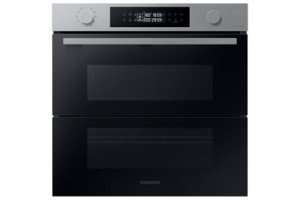The Comprehensive Guide to In-Built Ovens
Inbuilt ovens, also known as built-in ovens, are a necessary feature in modern-day cooking areas, integrating functionality and design in one design. With advancements in technology and a growing focus on cooking experiences, inbuilt ovens have actually become progressively popular for both amateur cooks and professional chefs. This short article provides a comprehensive overview of in-built ovens, their benefits, types, setup, upkeep, and responses to frequently asked questions.
What is an In-Built Oven?
A built-in oven is a kitchen appliance that is designed to be integrated into cabinetry or walls, providing a smooth appearance. Unlike conventional freestanding ovens, built-in ovens are fitted into designated areas and are often matched with other appliances, such as built-in microwaves or warming drawers, for a cohesive kitchen design.
Benefits of In-Built Ovens
Built-in ovens provide several benefits over conventional ovens. Some of the crucial benefits include:
- Space Efficiency: Built-in ovens save valuable floor area and can assist develop an arranged kitchen layout, specifically in smaller spaces.
- Visual Appeal: Their sleek design boosts the overall appearance of a kitchen, adding to a modern-day and streamlined appearance.
- Ergonomics: These ovens are typically set up at eye level, making it easier to check on food and reduce the danger of bending down.
- Customization: In-built ovens can be chosen based upon specific kitchen styles and customization preferences, allowing homeowners to develop their perfect cooking environment.
- Advanced Features: Many built-in ovens come equipped with modern functions like clever control systems, self-cleaning alternatives, and different cooking modes, improving effectiveness and cooking results.
Types of In-Built Ovens
In-built ovens are offered in different types, each catering to different cooking designs and needs. The main types include:
- Single Ovens: A traditional style with one cooking compartment.
- Double Ovens: Featuring 2 cavities, permitting simultaneous cooking at different temperature levels.
- Wall Ovens: Installed into the wall at eye level for easy access and decreased bending.
- Steam Ovens: Use steam to cook food, protecting wetness and nutrients.
- Convection Ovens: Incorporate fans for even heat distribution, minimizing cooking times.
- Microwave Ovens: A combination of microwave and traditional oven functionalities, best for flexible cooking needs.
- Mix Ovens: Combine different cooking techniques such as microwave, convection, and traditional baking.
Setup of In-Built Ovens
The setup procedure for in-built ovens differs based on the type and style. Here are some general steps involved:
- Preparation: Prior to setup, ensure the area is determined properly and matches the oven's measurements.
- Electrical and Plumbing: If your oven requires a gas line or specific electrical circuits, make sure the required modifications are made beforehand.
- Fitting: Place the oven into the cabinet or wall space and secure it according to manufacturer instructions, ensuring it is level.
- Ending up Touches: Install any trim or cabinetry required to cover spaces and attain a refined look.
Note: It's often recommended to work with an expert installer, specifically when handling electrical or gas connections.
Upkeep of In-Built Ovens
Proper maintenance is important for making sure the durability and efficiency of built-in ovens. Here are some essential upkeep tips:
- Regular Cleaning: Wipe down surface areas after each use, and use a self-cleaning function if readily available to minimize accumulation.
- Check Seals: Inspect the door seals regularly to guarantee they are undamaged and clean.
- Ventilation: Ensure that the oven has appropriate ventilation, especially for wall ovens positioned inside kitchen cabinetry.
- Service Checks: Schedule regular service consult qualified technicians to guarantee all components are operating correctly.
Frequently Asked Questions About In-Built Ovens
Q1: Are built-in ovens energy effective?A1: Yes, many built-in ovens are designed to be energy effective, often including insulation and advanced heating technologies that minimize energy consumption.
Q2: Can I set up an inbuilt oven myself?A2: While some property owners might choose to install their ovens individually, it is suggested to hire a professional, particularly if electrical or gas connections are involved.
Q3: Are inbuilt ovens more costly than freestanding ovens?A3: In-built ovens normally come at a greater price point due to their design, personalization choices, and advanced features.
Q4: How do I pick the best inbuilt oven for my kitchen?A4: Consider aspects such as your cooking practices, the readily available area, preferred functions, and your kitchen's design when selecting an inbuilt oven.
Inbuilt ovens are a valuable addition to modern-day kitchens, mixing style and functionality. With different types readily available, property owners can choose an oven that best matches their cooking needs and kitchen design. Comprehending built-in / integrated hobs and ovens , maintenance requirements, and functions can enhance the cooking experience while including value to the home. Whether you're an ambitious chef or a casual cook, investing in an in-built oven can basically transform the method you prepare meals, bringing both efficiency and elegance to your culinary ventures.
Summary Table of In-Built Oven Types
| Type of Oven | Key Features |
|---|---|
| Single Oven | One cooking compartment; ideal for standard use. |
| Double Oven | 2 compartments; allows cooking at various temps. |
| Wall Oven | Installed at eye level; decreases bending. |
| Steam Oven | Cooks with steam; retains nutrients. |
| Convection Oven | Even heat distribution; quicker cooking times. |
| Microwave | Integrates microwave and baking functionalities. |
| Mix Oven | Several cooking techniques; flexible cooking choices. |
With knowledge and considerations laid out in this post, readers can with confidence browse their alternatives for in-built ovens, making notified options that raise their kitchen experience.

